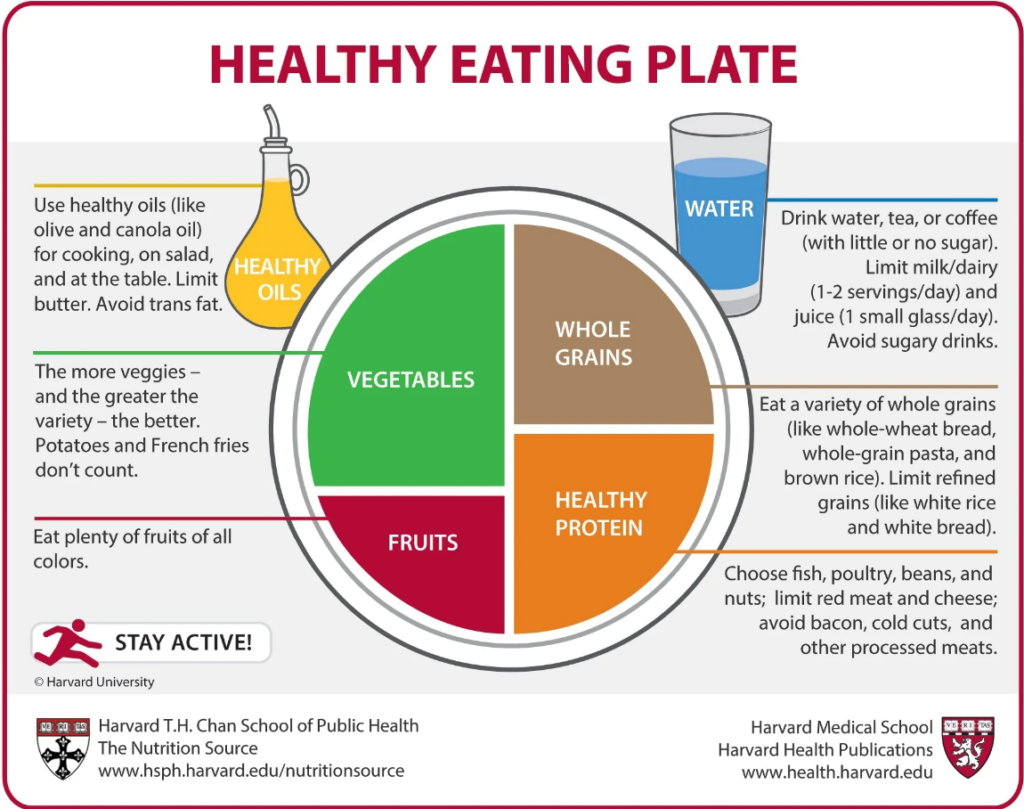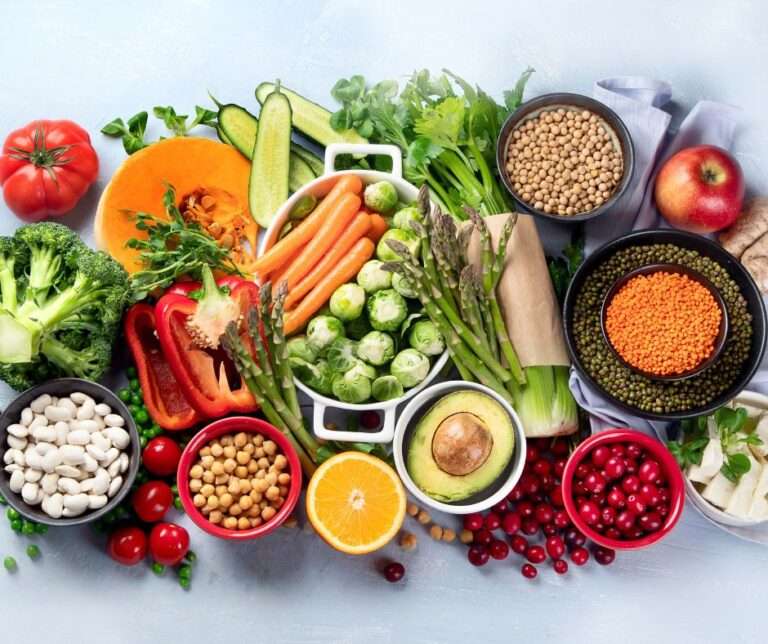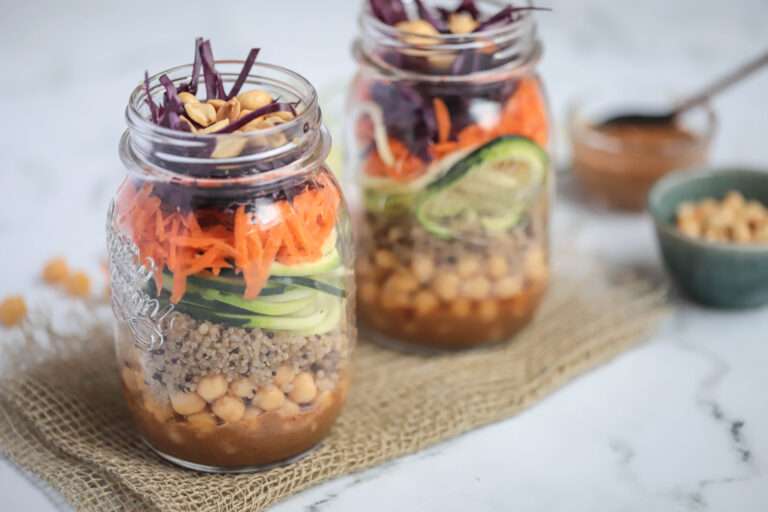Hey there, beautiful people! Today, we’re going to chat about something that’s super important, yet often misunderstood – nutrition. We’re going to break it down into bite-sized pieces (pun intended) and talk about how to create a balanced meal. So, let’s get started!
The Four Pillars of Nutrition
When it comes to nutrition, think of it as a table with four legs – carbs, fats, protein, and fiber. These are the four main categories that you’ll want to include in your meals and snacks throughout the day.
Carbs, Fats, and Proteins: The Macronutrient Trio
Carbs, fats, and proteins are your primary source of calories, collectively known as macronutrients, or “macros.” Fiber is a type of carbohydrate that your body doesn’t digest, but it’s super important, and we’ll get to that later.
Now, most foods are a mix of these macros. Take tofu, for example. It’s got protein, carbs, and fat. But let’s dive a little deeper into what these macros do for us.
Fats: Not the Enemy
Fats have gotten a bad rap over the years, but they’re actually essential for our bodies. They help us feel full, absorb nutrients, produce hormones, and even insulate us.

But not all fats are created equal. Unsaturated fats, which are found in plant-based foods and fish, are linked to a lower risk of heart disease and stroke. According to the Cleveland Clinic and Healthline, these fats can boost good cholesterol and lower bad cholesterol, contributing to a healthier lipid profile. Verywell Health also notes that consuming these fats, such as those found in avocados, in moderation and varying the intake of different types of oils can lead to a balanced diet.
On the other hand, the consumption of saturated fats is a topic of ongoing debate. Healthline suggests that reducing saturated fat intake could decrease the risk of cardiovascular events. However, studies cited by the National Institutes of Health have found no significant associations between consumption of saturated fats and coronary heart disease. The relationship between saturated fat and overall health is complex and continues to be a subject of ongoing research.
Carbs: The Energy Providers
Carbs are our body’s primary energy source. But just like fats, not all carbs are created equal.
Complex carbohydrates, found in foods like whole grains, fruits, and legumes, provide steady energy and contribute to overall health, as noted in a study in the American Journal of Clinical Nutrition.

On the other hand, simple carbohydrates, such as sugar and refined grains, cause rapid energy spikes and crashes. Their impact on cardiovascular health is highlighted in a study in the Journal of the American College of Cardiology.
One major culprit of excess calories is sugar-sweetened beverages and juices. So, if you’re looking to manage your sugar intake, consider swapping out those sugary drinks for water. And hey, why not add some fruits or herbs to make your water more exciting?
Protein: The Building Blocks
Protein is crucial for muscle synthesis and maintenance. It helps us feel full and plays a significant role in our body composition. Protein, essential for muscle synthesis and maintenance, significantly impacts our body composition. More muscle mass can boost metabolism and basal metabolic rate. Athletes often exceed the recommended daily protein allowance, a practice supported by a study in the Journal of the International Society of Sports Nutrition.

However, excessive protein can lead to health complications. A study in the Journal of the Academy of Nutrition and Dietetics warns that high protein diets may exacerbate chronic kidney disease.
Balance in protein intake is crucial. Plant-based proteins, known for their lower saturated fat and higher fiber content, are beneficial. A study in the Nutrients journal affirms that plant-based diets can offer health benefits for disease prevention and treatment.
Fiber: The Unsung Hero
Fiber is all about keeping you full and maintaining a healthy gut microbiome. It also lowers the risk of diabetes, heart disease, and other diet-related diseases. However, most children and adults consume less than half the recommended fiber levels, as per a study.

Fiber is categorized into soluble and insoluble types. Soluble fiber helps slow digestion, regulate blood sugar, and lower cholesterol, as indicated in a study. Conversely, insoluble fiber aids in bowel movement and prevents constipation, as shown in a study.
Consuming fiber-rich foods like fruits, vegetables, and whole grains can enhance digestion and satiety, aiding in weight control. A study corroborates this, linking higher fiber intake to lower body weight.
Micronutrients: The Little Guys That Pack a Punch
Vitamins and minerals, collectively known as micronutrients, don’t contain calories, but they’re essential for our bodies. They each have different roles, and deficiencies can lead to serious health consequences. For example, an iron deficiency can result in anemia, a red blood cell deficiency.
If you’re worried about potential micronutrient deficiencies, it might be beneficial to consult a doctor about supplementing your diet with a multivitamin. However, for most healthy individuals, a balanced diet should be enough to meet all vitamin and mineral needs.
While supplements can help bridge nutritional gaps, they can’t mimic all the nutrients and benefits of whole foods. A study warns against depending solely on them for preventing cardiovascular disease or cancer.
Food for Thought
Overall, less processed foods tend to be more nutrient-dense. They offer more than just calories – they’re packed with vitamins, minerals, fiber, and phytonutrients. So, the less “processed” a food is, the more nutrition benefits it typically has.
At our online nutrition business, we use Harvard’s Healthy Eating Plate, which shows a different method of dividing up your plate compared to the Australian Dietary Guidelines. The main difference is that this plate does not recommend as much dairy. It’s another great way to evaluate what you’re eating and assess if you need more or less of any category.

Take a Moment to Reflect
Having a sense of our food habits is very important. What do your plates typically look like? Are there aspects of your meals that you’d like to work on, like getting more veggies, or reducing added sugars?
Try This!
When you make a meal this week, think about what you’re putting on your plate. Where are the carbs, the fats, proteins, and the fiber? Practicing this identification exercise can help you gain intuition about how you typically fuel yourself. Awareness is the first step!





